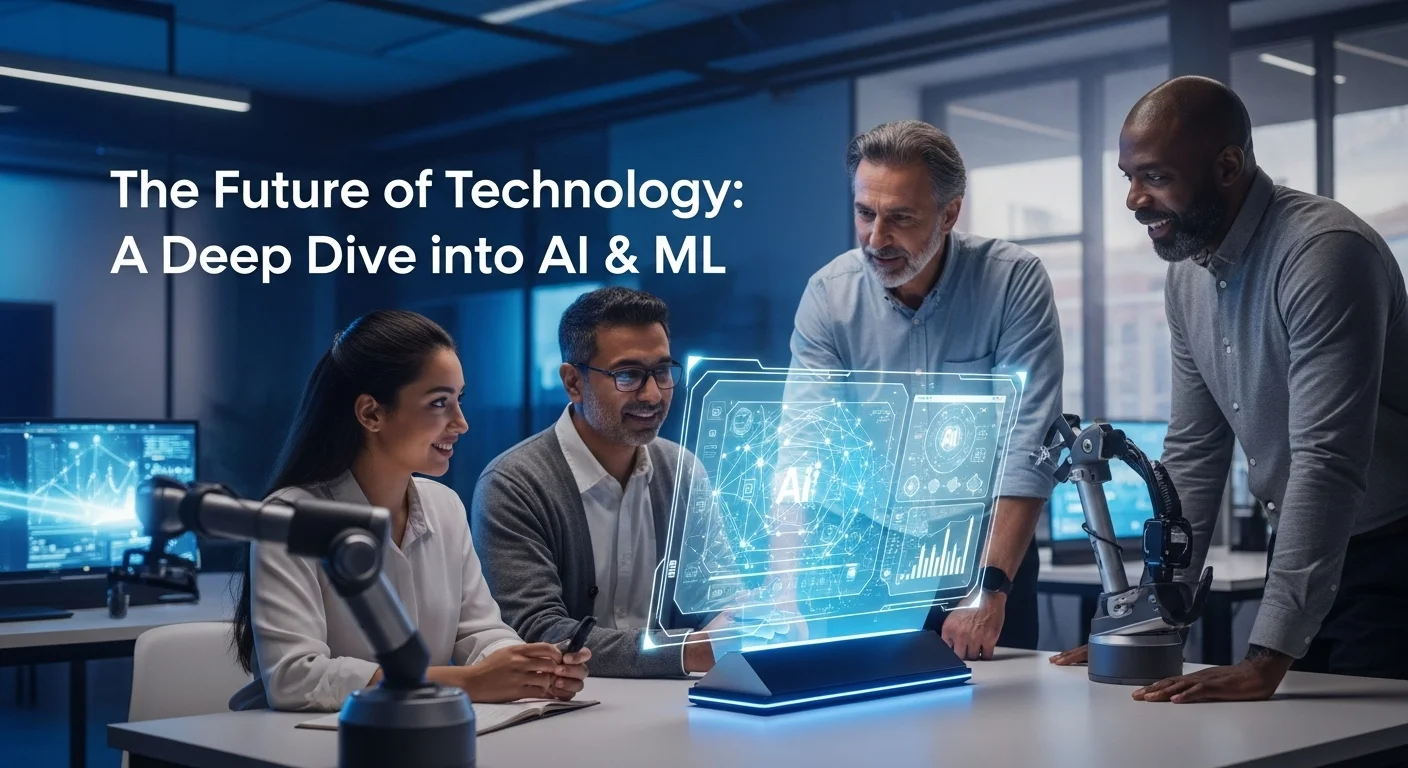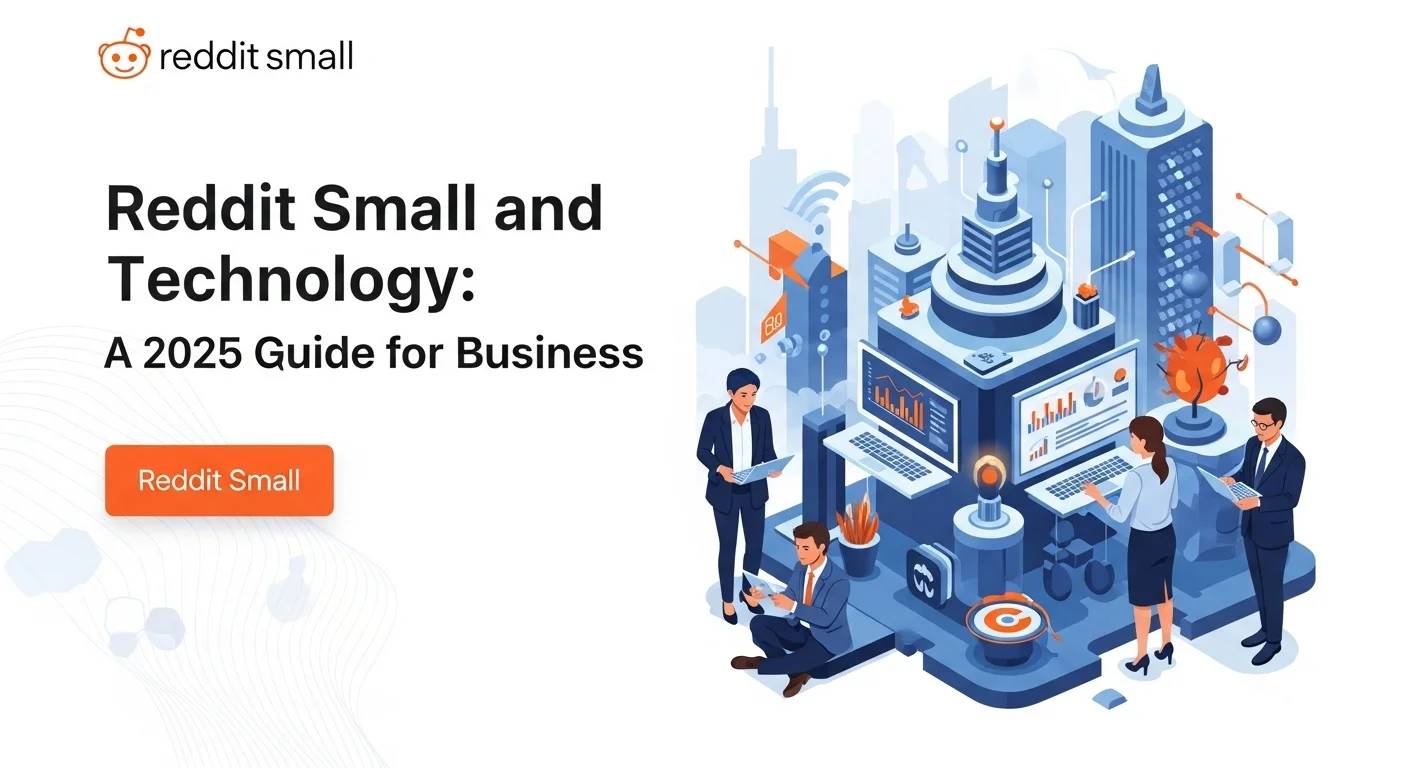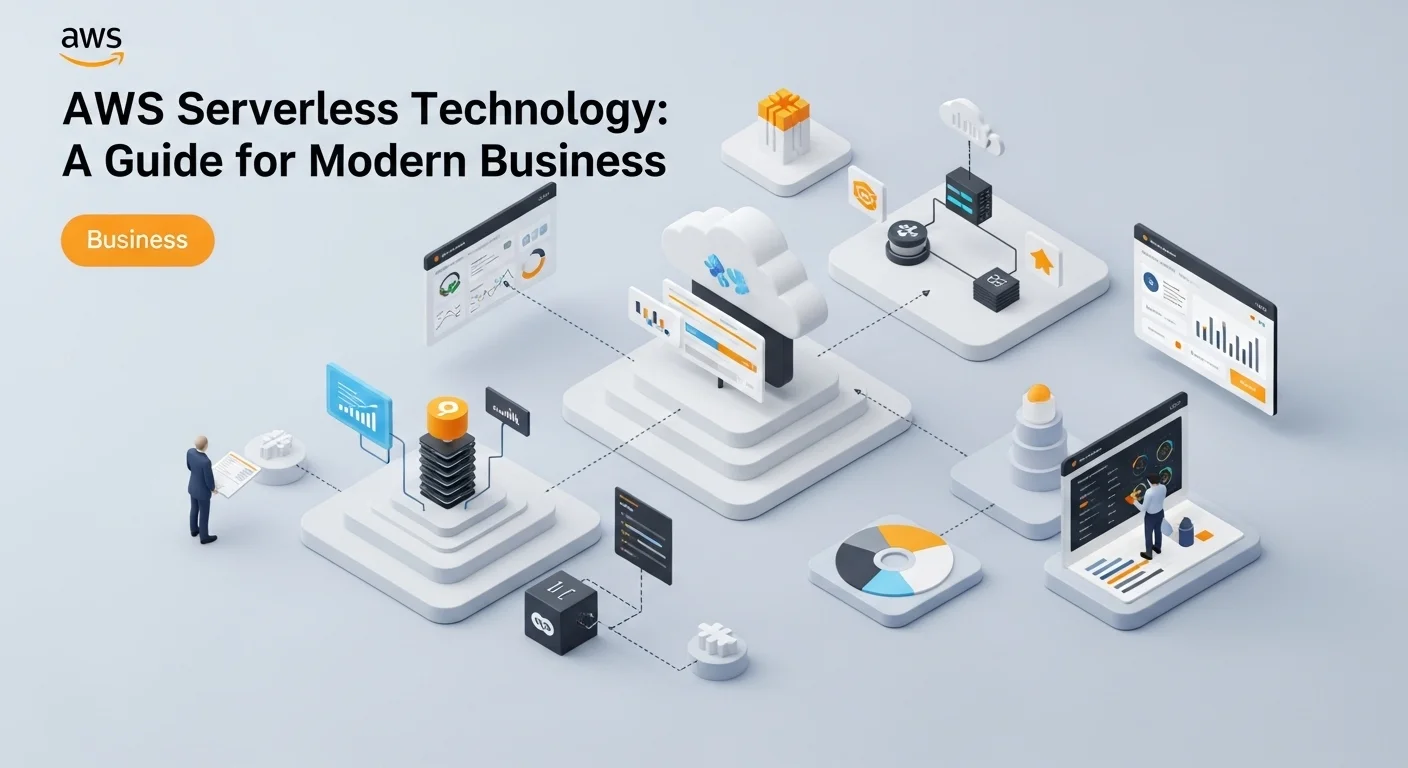AI and Machine Learning Explained: A Personal Guide to Business Transformation

Executive Summary
Let's cut through the noise. Artificial Intelligence (AI) and Machine Learning (ML) are more than just tech buzzwords; they are powerful tools actively reshaping our world. I've spent years in this field, and I've seen firsthand how these technologies can turn a struggling business into an industry leader. This guide is my attempt to share that experience with you. We'll break down the core concepts of AI and ML in simple terms, explore their powerful partnership, and show you how they're creating tangible benefits for businesses—from smarter operations to truly personal customer experiences. Think of this as your roadmap to understanding and implementing these technologies, whether you're a tech enthusiast or a business leader looking for a competitive edge. We'll even cover what to look for when you need to bring in an expert development partner to help you on your journey.
Table of Contents
Table of Contents
What Are AI and Machine Learning, Really?
In my journey through the tech world, I've seen countless terms get thrown around, but none more transformative than Artificial Intelligence (AI) and Machine Learning (ML). People often use them as if they're the same thing, but understanding the difference is key to unlocking their power. Think of it this way: AI is the grand vision, the big dream of creating machines that can think and reason like humans. ML, on the other hand, is the most successful tool we have right now to make parts of that dream a reality. It's the engine that powers the intelligence.
Artificial Intelligence (AI) is the broad field of computer science dedicated to creating 'smart' machines. The ultimate, sci-fi goal is a 'General AI' that can reason, learn, and solve any problem just like a person. We're not there yet. What we have today is 'Narrow AI,' which is incredibly powerful but focused on specific tasks. The smart assistant on your phone, the software that recognizes your face to unlock it, or the recommendation engine on your favorite streaming service—these are all brilliant examples of Narrow AI. They're experts in their one job.
Machine Learning (ML) is a specific subset of AI, and it's where the magic really happens today. Instead of a developer writing explicit rules for every possible situation, we use ML to 'teach' a computer by showing it massive amounts of data. The algorithm learns the patterns from that data and then uses that knowledge to make predictions or decisions about new things it hasn't seen before. The 'learning' part is crucial—the more data it gets, the smarter it becomes. So, when you see a personalized ad that feels a little too perfect, that's an AI feature being driven by an ML model that learned your habits. AI is the 'what,' and ML is the 'how.' When businesses talk about leveraging AI today, they're almost always talking about solutions built with machine learning. This is why finding an expert partner, a skilled AI and ML development team, can be such a game-changer.
Why This Technology Matters More Than Ever
The importance of AI and ML has exploded for one main reason: data. We live in a world that generates an unimaginable amount of data every single day. No team of human analysts could ever hope to make sense of it all. This is where these intelligent algorithms shine. They can process vast datasets at incredible speeds, uncovering hidden patterns and insights that would otherwise be lost. This ability to turn a flood of data into actionable wisdom is what's driving innovation in every industry.
Moreover, AI and ML are the ultimate engines for automation and efficiency. I've seen companies completely transform their operations by automating repetitive, mind-numbing tasks. This doesn't just cut costs and reduce errors; it frees up their talented human employees to focus on what they do best: creative thinking, strategy, and complex problem-solving. In manufacturing, AI-guided robots build products with flawless precision. In customer service, smart chatbots provide instant support 24/7, dramatically improving customer satisfaction. It's about making our work processes faster, smarter, and more reliable.
Personalization is the other huge win. In today's crowded market, a generic experience just doesn't cut it. Customers expect you to know them. ML is the tool that makes this possible. By analyzing a user's past behavior and preferences, ML models can deliver perfectly tailored product recommendations, content, and marketing messages. When a streaming service knows exactly what movie you want to watch next, it creates a powerful sense of connection and loyalty. This level of personalization is a core strategy for modern business, and it's something the best AI development firms excel at creating.
The Real-World Impact on Your Business
The practical applications are everywhere, and they're delivering real value. In finance, ML algorithms are our frontline defense against fraud, spotting suspicious transactions in real-time. In healthcare, I've been amazed to see AI models analyze medical scans to detect diseases with an accuracy that can match or even exceed human experts. They're helping doctors create personalized treatment plans and accelerating the discovery of new drugs.
In retail, beyond just recommending products, AI is used to forecast demand with incredible accuracy. By analyzing sales history and market trends, it helps stores optimize inventory, preventing waste and ensuring popular items are always in stock. Look at logistics, where AI is optimizing delivery routes to save millions in fuel and time, or at the development of self-driving vehicles, which are set to change everything. The common thread is clear: these technologies turn raw data into intelligent action, leading to smarter, more efficient businesses.
The benefits are undeniable. First, you have increased efficiency and lower costs through smart automation. Second, you get better decision-making. I always tell leaders to move away from 'gut feelings' and embrace data-driven insights. It reduces risk and builds a much stronger competitive advantage. Finally, AI and ML can unlock entirely new ways to make money by identifying new market opportunities or creating innovative services. Investing in AI, whether you build the capability in-house or partner with a specialized development team, isn't just a tech upgrade. It's a strategic business transformation that's defining the future economy.

A Practical Guide to AI and ML Implementation
Getting into AI and ML is more than just understanding the theory; it's about knowing how to make it work in the real world. This is your guide to the methods, strategies, and tools you'll need. I want to demystify the process and give you a clear roadmap for turning your data into your most valuable asset. This is the practical knowledge you need, whether you're building your own team or looking to hire a top-tier AI development partner.
The Core Methods: Your AI Toolkit
Machine Learning is generally broken down into three main styles. I've found that using simple analogies helps people grasp these concepts much faster.
1. Supervised Learning: Learning with Flashcards. This is the most common approach. You give the algorithm a dataset where all the answers are already labeled, like a set of flashcards. For example, you show it thousands of pictures, each labeled 'cat' or 'dog.' The algorithm studies them until it learns the patterns and can correctly identify a cat or dog in a new photo it has never seen. This is used for:
- Classification: Putting things into categories. Is this email 'spam' or 'not spam'? Is this tumor 'benign' or 'malignant'?
- Regression: Predicting a number. What will the price of this house be? How many units will we sell next quarter?
2. Unsupervised Learning: Sorting a Messy Room. Here, you give the algorithm a bunch of unlabeled data and ask it to find the patterns on its own. Imagine dumping a giant box of LEGO bricks on the floor and asking it to sort them into logical piles without any instructions. It will start grouping them by color, size, and shape. This is used for:
- Clustering: Grouping similar things together. This is perfect for customer segmentation, where you group customers with similar buying habits to create targeted marketing campaigns.
- Association: Finding hidden relationships. The classic example is a store discovering that customers who buy diapers often buy beer too, leading them to place the items near each other.
3. Reinforcement Learning: Teaching a Dog New Tricks. This is a more dynamic approach where an algorithm, or 'agent,' learns by trial and error. It operates in an environment and gets rewards for good actions and penalties for bad ones. Over time, it learns the best strategy to maximize its reward. This is how AI learns to play complex games like Chess or Go. It's also critical for robotics, where a robot learns to walk or handle objects, and for developing the 'brains' of self-driving cars. The most innovative AI companies are pushing the boundaries of what's possible with reinforcement learning.
Your Roadmap to a Successful AI Project
Integrating AI isn't just a tech project; it's a business initiative. I've seen projects succeed and fail, and the successful ones always follow a clear path.
- Start with the 'Why': The most important step. Don't start with the technology; start with a clear business problem. What pain point are you trying to solve? Are you trying to cut costs, reduce customer churn, or boost sales? A well-defined goal with a measurable outcome is your north star.
- Data is Everything: Your model is only as good as the data you feed it. This is often the hardest part—gathering, cleaning, and preparing your data. You have to handle missing information, remove errors, and get it into a usable format. I can't stress this enough: invest time and resources in data quality.
- Choose Your Model and Train It: Based on your problem and your data, your team will pick the right ML model. They'll then train it on a portion of your data, letting it learn the patterns.
- Test, Test, Test: Once trained, the model is tested on data it's never seen before. This shows you how it will perform in the real world. It's a process of tuning and refining until the performance is where you need it to be.
- Deploy and Integrate: Now it's time to release your model into the wild, integrating it with your existing systems so it can start delivering value on live data. This is where collaboration between data scientists and software engineers is crucial and where a professional AI development firm can really shine.
- Monitor and Maintain: An AI model isn't a one-and-done solution. The world changes, and so does data. You have to continuously monitor the model's performance to make sure it stays accurate. It may need to be retrained with fresh data to keep it sharp.
The Tools of the Trade
The good news is, you don't have to build everything from scratch. Powerful tools are available to everyone.
- Cloud AI Platforms: Giants like Amazon (AWS), Google Cloud, and Microsoft Azure offer incredible suites of AI and ML services. They provide the infrastructure, tools, and even pre-trained models that can dramatically speed up development. Many of the best AI development partners build their solutions on these powerful platforms.
- Open-Source Libraries: The spirit of collaboration in the AI community is amazing. Libraries like Google's TensorFlow and Facebook's PyTorch are the industry standard, providing free, robust tools for building custom models. They are the workhorses for data scientists everywhere.
- AI vs. ML vs. Deep Learning: Let's clarify one more thing. We know ML is a part of AI. Deep Learning is a specialized type of ML that uses 'neural networks' inspired by the human brain. These networks have many layers, allowing them to learn incredibly complex patterns from huge amounts of data. Deep learning is the powerhouse behind the biggest breakthroughs in image recognition and natural language understanding—it's the cutting edge of AI today.
Ultimately, a successful journey into AI is built on a solid technical understanding, a smart business strategy, and using the right tools. By following a clear process, you can unlock the incredible potential of this technology and gain a serious competitive advantage.

Best Practices for a Successful AI Strategy
As AI becomes woven into the fabric of our businesses and daily lives, knowing how to use it effectively is crucial. For leaders, it's about smart investment and building a data-first culture. For the rest of us, it's about understanding these systems to get the most out of them. Here are some tips and strategies I've learned over the years to help you improve your experience with AI and machine learning, whether you're implementing it yourself or choosing an expert partner to guide you.
My Personal Best Practices for Implementing AI
Following a few key principles can be the difference between a project that delivers amazing ROI and one that becomes a costly headache.
- Start with a Clear Business Case: A lesson I learned the hard way is to never chase technology for technology's sake. Every AI project must solve a real business problem. Start with a small, manageable proof-of-concept project that addresses a high-value issue. A quick win will show the value of AI and build the momentum you need for bigger initiatives.
- Obsess Over Data Quality: The old saying 'garbage in, garbage out' has never been truer. Your AI is completely dependent on the quality of its data. You must have solid practices for ensuring your data is accurate, complete, and secure. A strong data foundation is not optional; it's the price of entry.
- Build a Data-Driven Culture: The best technology in the world will fail if your company culture isn't ready for it. This means training your teams to be comfortable with data, breaking down silos between departments, and encouraging data-informed decisions at every level. This change has to be championed from the top.
- Be Agile and Iterate: AI projects are experiments. You'll almost never get it perfect on the first try. I always advise teams to adopt an agile approach. Build, test, and learn in quick cycles. This allows you to adapt, refine your model, and deliver value step-by-step.
- Put Ethics and Fairness First: This is critical. AI models can accidentally learn and even amplify the biases present in our data. You have to be proactive about AI ethics. Audit your data for bias, work to make your models explainable, and set clear ethical guidelines. Building responsible AI isn't just about compliance; it's about earning and keeping trust. The leading AI companies now make this a core part of their service.
- Plan to Scale from Day One: Think big from the start. A model that works on your laptop might crumble under real-world pressure. Implement MLOps (Machine Learning Operations) practices, which bring the discipline of DevOps to the machine learning lifecycle. This helps automate and streamline how you build, deploy, and manage models at scale.
How to Choose the Right AI Development Partner
For many businesses, building a world-class AI team from scratch just isn't realistic. Partnering with a specialized AI development company can give you instant access to top talent and experience. Here's what to look for.
- Relevant Industry Experience: Find a company that understands your world. If they've solved problems in your industry before, they'll grasp your unique challenges and data much faster. Always ask for case studies and client success stories.
- Technical Chops: Evaluate their technical skill set. What tools and platforms do they use? Do they have deep expertise in the specific area you need, like computer vision or natural language processing?
- The Quality of the Team: At the end of the day, you're hiring people. Look into the background of their data scientists and engineers. I've found the best teams have a healthy mix of deep academic knowledge and gritty, real-world problem-solving experience.
- A Collaborative Process: How do they manage projects and communicate? You want a true partner, not just a vendor. A transparent, agile, and collaborative approach is a very good sign.
- A Focus on Business Value: A great partner is obsessed with solving your business problem, not just building cool tech. They should be able to clearly explain how their solution will deliver a return on your investment and help you hit your goals.
Technology Experiences Already Enhanced by AI
You're already using AI every day, even if you don't realize it. CRM platforms like Salesforce use AI to predict which leads are most likely to close. Marketing tools like HubSpot use it to personalize your email experience. Business Intelligence tools like Tableau are now letting users ask questions in plain English to uncover insights in their data.
Outside of work, our personalized news feeds, email spam filters, and digital voice assistants are all getting smarter thanks to machine learning. In cybersecurity, AI is working silently in the background to detect threats before they can do damage. Understanding that these systems are at play can help you customize your settings for a better, more private experience. For those who want to stay on the cutting edge, I highly recommend authoritative resources like the MIT Technology Review's guide on AI for the latest information. Whether for business or personal use, the key to a great experience with AI is smart application, ethical awareness, and a commitment to keep learning.
Expert Reviews & Testimonials
Sarah Johnson, Business Owner ⭐⭐⭐⭐
This was a great starting point! As a business owner, I would have loved a few more specific case studies for small businesses, but it definitely clarified the basics of AI and ML for me.
Mike Chen, IT Consultant ⭐⭐⭐⭐
Solid overview. As an IT consultant, I'm always looking for clear explanations for my clients. This article breaks down some complex topics well, though the deep learning section could be a touch simpler for a total beginner.
Emma Davis, Tech Expert ⭐⭐⭐⭐⭐
Fantastic and comprehensive guide to AI and ML. It connected a lot of dots for my specialization work. I especially appreciated the breakdown of the different learning models with simple analogies. Highly recommended!



